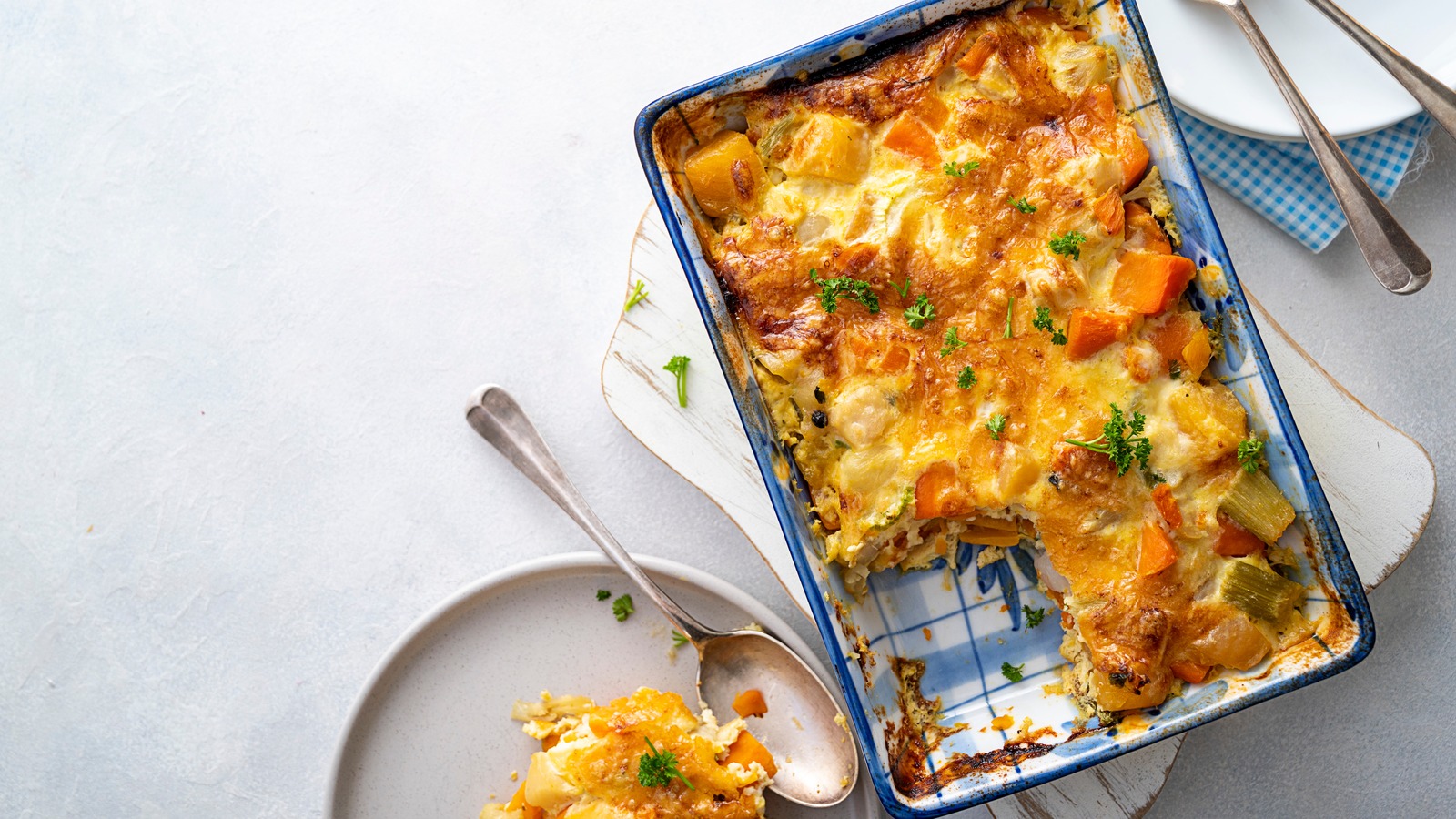
Welcome to a culinary adventure where we dive into the aromatic and flavorful world of shallots! In this comprehensive guide, we will explore how to cook shallots in a casserole - a delicious and versatile dish that you can easily prepare at home. Whether you're an experienced chef or a kitchen novice, this recipe will impress anyone at your dinner table.
:max_bytes(150000):strip_icc()/8965-broccoli-chicken-casserole-mfs_065-d4919d9e79b94973aa9a54ac22736a62.jpg)
The Beauty of Shallots
Shallots are truly an underappreciated gem in the culinary world. They offer a unique flavor profile that is subtly sweet and evocatively aromatic. Unlike their bolder cousins, onions, shallots have a more refined taste that enhances the flavors of a myriad of dishes without overpowering them. Their delicate texture and somewhat garlicky notes make them a perfect choice for casseroles.

Essential Ingredients for the Perfect Shallot Casserole
Before we delve into the recipe, let's gather our ingredients. The key to making a delectable casserole is having everything prepared and ready to go. Fresh, high-quality ingredients are absolutely vital. Let's break down what you will need:
- Shallots (8-10 medium-sized)
- Olive Oil (2 tablespoons)
- Butter (2 tablespoons)
- Garlic (4 cloves, minced)
- Fresh Thyme (4-5 sprigs)
- Heavy Cream (1 cup)
- Gruyre Cheese (1 cup, grated)
- Salt (to taste)
- Ground Black Pepper (to taste)
- Casserole Dish
- Knives Set
- Cutting Board
:max_bytes(150000):strip_icc()/240431-chicken-spinach-casserole-ddmfs-4x3-5217082cf4684a73a871a0eeb8c4fe51.jpg)
Step-by-Step Guide on How to Cook Shallots in a Casserole
1. Preparing the Shallots
Start by peeling the shallots. One of the challenges with shallots is their thin, papery skin, which can be a bit tricky to remove. Use a sharp knife from your Knife Set and cut off both ends of the shallot. Make a shallow cut lengthwise to help peel the skin off easily. Once peeled, slice the shallots thinly, ensuring even slices for uniform cooking.
2. Sauting the Shallots
Heat the Casserole Dish on medium heat. Add the olive oil and butter. Once the butter has melted, add the minced garlic. Saut until fragrant, taking care not to burn it. Add the sliced shallots to the dish and saut them until they are soft and slightly caramelized. This process is crucial as it brings out the natural sweetness of the shallots, adding depth to your casserole.
3. Flavor Infusion
Add the fresh thyme sprigs into the dish. Thyme complements the delicate flavor of shallots beautifully, lending an earthy note to the dish. Stir well to ensure the shallots are well-coated with the aromatic oils. Season with a pinch of salt and a few grinds of black pepper to taste.
4. Adding the Cream and Cheese
Pour the heavy cream over the sauted shallots and stir to combine. Allow the cream to simmer and thicken slightly, which will create a rich, luxurious base for the casserole. Gradually add the grated Gruyre cheese, stirring continuously until the cheese has melted and fully incorporated into the sauce. Gruyre adds a nutty flavor and a creamy texture that elevates the dish.
5. Baking the Casserole
Preheat your oven to 350 degrees Fahrenheit (175 degrees Celsius). Ensure that the mixture in the casserole dish is evenly spread. Place the dish in the preheated oven and bake for 20-25 minutes or until the top is golden and bubbly. The baking process melds all the flavors together and creates a beautiful crust on top.
6. Garnishing and Serving
Once your casserole is done baking, remove it from the oven and let it cool slightly before serving. Garnish with some fresh thyme leaves for a pop of color and additional flavor. Serve this delightful shallot casserole as a side dish to complement roasted meats, poultry, or even as a standalone vegetarian main course.
:max_bytes(150000):strip_icc()/Screen-Shot-2021-08-08-at-5.08.48-PM-1e7f38da675d4358ba8678666aedb364.png)
Tips for the Best Shallot Casserole
Choosing the Best Shallots
When selecting shallots for your casserole, look for ones that are firm, plump, and free from blemishes. Smaller shallots tend to be sweeter and more flavorful. Avoid shallots that have sprouted or have soft spots, as these are signs of aging.
Storage and Preparation
Shallots can be stored in a cool, dry place for several weeks. To make peeling easier, soak the shallots in warm water for a few minutes before peeling. This loosens the skin and makes it easier to remove.
Recipe Variations
Feel free to customize your shallot casserole by adding other ingredients like mushrooms, spinach, or even a splash of white wine for extra depth of flavor. You can also experiment with different cheeses such as Parmesan or cheddar for a different taste profile.
Pairing Suggestions
This shallot casserole pairs wonderfully with a variety of dishes. Serve it alongside a juicy grilled chicken, steak, or a savory pork tenderloin. For a vegetarian meal, pair it with a fresh green salad and some crusty bread.
Why You Should Try This Recipe
This shallot casserole recipe is not only delicious but also incredibly versatile. It's a dish that works for any occasion, from a weeknight dinner to a festive holiday meal. The flavors are sophisticated yet comforting, making it a crowd-pleaser. Plus, it's an excellent way to incorporate shallots into your cooking, allowing you to appreciate their unique taste and versatility.
If you enjoyed this recipe, be sure to check out our other delicious casserole recipes for more inspiration!
Cleaning Up Tips
Cleaning up after cooking can be a chore, but it's essential to maintain your kitchen tools and cookware in top condition. Here are some products that can help you:
As an Amazon Associate, I earn from qualifying purchases.



